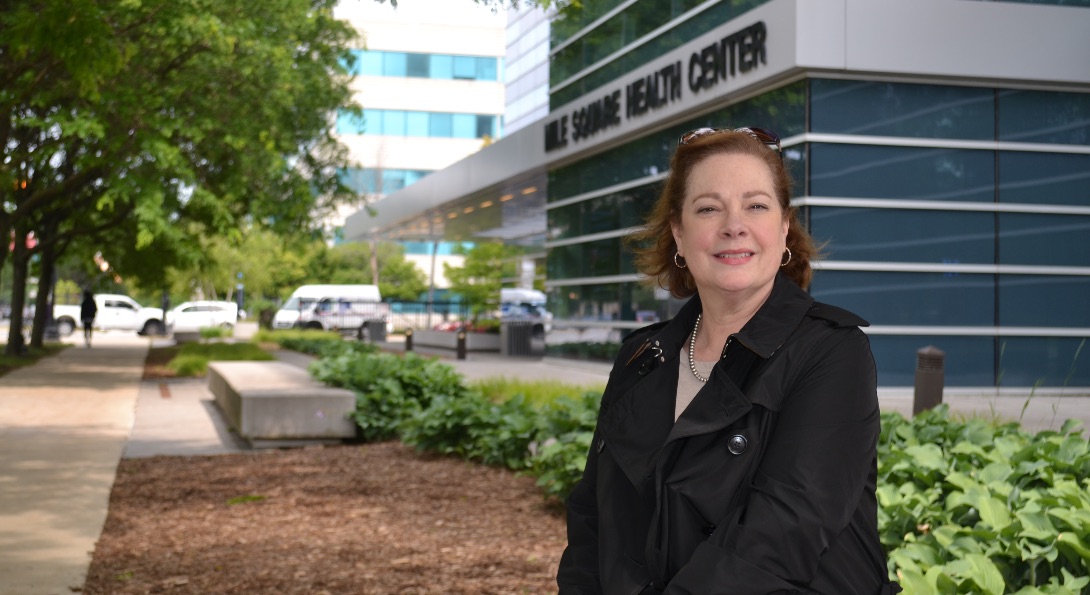Stigma, shame and blame: the impacts on HPV vaccination and screenings

Story text
Public health researchers often cite cost as a barrier to healthcare access for people across the U.S. When SPH’s Caryn Peterson, PhD, began examining human papillomavirus (HPV) vaccination rates at federally qualified health centers, a different picture emerged.
HPV is the most common sexually transmitted infection (STI) in the U.S., and some types of HPV cause cervical cancer, the fourth-most common type of cancer for women worldwide. For people receiving care at FQHCs, HPV vaccines and cervical cancer screenings are available at no cost thanks to federal programs and legislation, but people who utilize FQHCs have lower rates of HPV vaccines and screenings than non-Medicaid insurance patient populations.
Peterson’s research is zeroing in on key non-access barriers: public stigma, shaming and blaming.
“If you are stigmatized by behavior or a health condition, this can reduce your likelihood of seeking care,” Peterson said.
Peterson is a research assistant professor of epidemiology and biostatistics and co-director of the UIC Cancer Health Equity and Career Development Program. Her research identifies discordance between adults’ knowledge and practice.
In a scoping review in the journal Preventive Medicine, Peterson and co-authors used a health stigma and discrimination framework to explore causes of vaccine and screening hesitancy. They noted positive social norms might provide motivation to receive vaccination and screening, while negative facilitators like stigma drive fear of social judgment, rejection and shame.
At its core, shaming and blaming beliefs persist that acquiring HPV and cervical cancer is a result of “incautious behavior,” either multiple sexual partners or failure to access screening. This belies the fact that people in monogamous relationships are also at risk of acquiring HPV.
Stereotyping also plays a role, introducing the concept that certain actions on the part of the individual are the true cause of their disease. Peterson says this stigma plays a potent role in marginalizing individuals.
“There are already populations that have some degree of medical mistrust, and being a member of a stigmatized group makes that relationship with healthcare providers more uncomfortable,” Peterson said.
The research also identified a gender imbalance in public stigma. Though HPV is an STI, the role of men in a woman’s acquisition of HPV is generally treated with indifference. This imbalance persists even though most men, women and non-binary individuals will develop an HPV infection at some point in their lives.
Peterson and Andrew Dykens, MD, MPH ’08, associate professor of family medicine at the University of Illinois
College of Medicine, identified similar trends of social influences toward HPV and cervical cancer among people in Senegal. A study published in the journal Plos One indicated women are more likely than men to stigmatize cancer and experience self-blame for developing cancer. The study also found women rely more heavily than men on social networks for health guidance, as opposed to turning to healthcare professionals for advice.
In Chicago, with high rates of cervical cancer and pre-cancer, misinformation is rife on prevention and the role of screening, with emphasis on perceived negative behaviors rather than wellness behaviors. Peterson sees a role for numerous protecting factors, beginning with education on the high prevalence of HPV infection and the importance of engaging males in supporting screening for female partners as well as HPV vaccination.
Peterson says HPV screenings and vaccinations need to be normalized as healthy steps to engage in self-care. Especially for children, providers should stress the vaccine is a tool for cancer prevention, rather than protection against STIs.
Stigma creates barriers in a range of healthcare issues beyond cervical cancer. For example, Peterson and Sage Kim, PhD, associate professor of health policy and administration, recently published new research examining the intersection of HIV, stigma and the lives of formerly incarcerated older adults.
“Stigmatizing health conditions is another means of social stratification,” Peterson said. “The elements of stigma are potent risk factors for health-seeking behavior that need to be considered in health education as well as in interventions.”